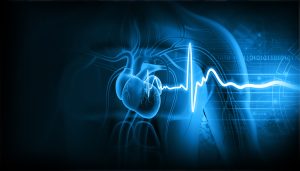Articles / Assessing concussion in general practice

New government-sponsored resources released earlier this month affirm that health professionals should use the SCAT6 tool for athletes aged ≥ 13 as part of the overall clinical assessment—and the Child SCAT6 for those aged 5-12. If it has been longer than 72 hours, they suggest Sport Concussion Office Assessment Tool 6 (SCOAT6).
The resources from the Australian Sports Commission (ASC) and Australian Institute of Sport (AIS) note that the tools should be used in isolation — and the same goes for computerised neurocognitive testing.
However, Professor Gary Browne, medical director of the Kids Concussion Service, and staff specialist at the Children’s Hospital Institute of Sports Medicine at The Children’s Hospital at Westmead, says that while the assessment tools can be useful for their comprehensive symptoms list, they are not practical for use in general practice.
“The problem is that the sports concussion assessment tool is not a well validated tool. It’s a checklist, essentially, for people who don’t do it very often,” Professor Browne says.
“And for GPs, it will probably add double the consultation time to actually complete.”
It’s crucial to remember that concussion is a clinical diagnosis, he says.
“There are no biomarkers, there’s no fancy test you can do to say ‘yes, it’s positive, this is a concussion.’ It’s a clinical diagnosis for a start, and it’s based on the child having a history of trauma to the head or body associated with the appropriate symptoms and signs that follow within 24 hours of that injury. And, basically, then, long term they reduce over time.”
Concussion symptoms |
|||
| Physical domain | Cognitive domain | Emotional domain | Sleep domain |
| Headache | Feeling mentally ‘foggy’ | Irritability | Drowsy |
| Nausea/vomiting | Feeling slowed down | Sadness/depression | Sleeping more |
| Sensitivity to light/noise | Answer questions slowly | Personality change | Sleeping less |
| Visual problems | Difficulty concentrating | Anxiety/panic | Difficulty falling/ staying asleep |
| Fatigue | Forgetful of event | More emotional | |
| Dazed or stunned | Repeats questions | Less emotional/ apathetic | |
| Dizzy, balance problems | Drop in academic performance | ||
Source: Browne GJ, Dimou S. Concussive Head injury in children and adolescents. 2016; 45 (7).
“So, the symptoms are the key to diagnosis and the extra bits that confirm the diagnosis are the child’s balance is not quite right, or the child on visual fixation is having symptoms like headaches and the child just doesn’t quite feel so well,” Professor Browne says.
“Get the child to fixate and follow on their finger and move from left to right up or down and see if it produces symptoms. Get them to stand on one leg and get them to do tandem gait. And if they want, they can do a cognitive assessment, but it’s not necessary.”
He says if you’re talking to the child, asking how the child is engaging with school, if they are reading and focused on simple tasks throughout the day, that in and of itself is cognitive testing, and “you don’t need a fancy test to see the kid’s okay.”
“If it’s a very high symptom burden, then you’re dealing with a very significant concussion. If it’s a very low and minimal symptom burden, then it’s a pretty minor sort of injury,” Professor Browne explains.
In cases where the symptom burden is very high, he recommends referring to a specialist.
“Particularly if a child is getting into the second day of recovery and is still highly symptomatic despite light exercise. They shouldn’t be continuing to manage in general practice. They should be referred to a specialist service for further evaluation.”
The AIS and ASC resources for medical professionals state that blood tests and medical imaging are not indicated for diagnosis or management of uncomplicated concussion, but imaging may be used where there is suspicion of serious head or brain injury.
In practical terms, Professor Browne says there are only two indications for imaging.
“When the child presents initially following the initial head injury and there’s concern they might have a subdural haematoma or an epidural haematoma — so they’ve got escalating headache, they’ve got focal neurology — then they should be imaged — absolutely no question about that,” he says.
“Thereafter if they present with typical concussion symptoms that are waning over time, there is absolutely no indication for imaging.”
“However, if that child then starts developing persistent symptomatology, and particularly, if they’re developing symptoms of headache that are starting to progressively increase or get worse, then they should have an MRI of their brain.”
“GPs can do that, but they should be sending those patients off very quickly to a clinical service for evaluation.”
The updated Concussion and Brain Health Position Statement 2024
Medical Practitioners | Concussion in Australian Sport
Read more about the new concussion guidelines for youth and community sport here.

Allergen Introduction – Practical Tips for GPs

Oral Contraception Update

What do we do With High Triglycerides?

An Update on Heart Failure in Primary Care

Very overestimated
Moderately/slightly overestimated
Quite accurate
Moderately/slightly underestimated
Very underestimated
Listen to expert interviews.
Click to open in a new tab
Browse the latest articles from Healthed.
Once you confirm you’ve read this article you can complete a Patient Case Review to earn 0.5 hours CPD in the Reviewing Performance (RP) category.
Select ‘Confirm & learn‘ when you have read this article in its entirety and you will be taken to begin your Patient Case Review.





